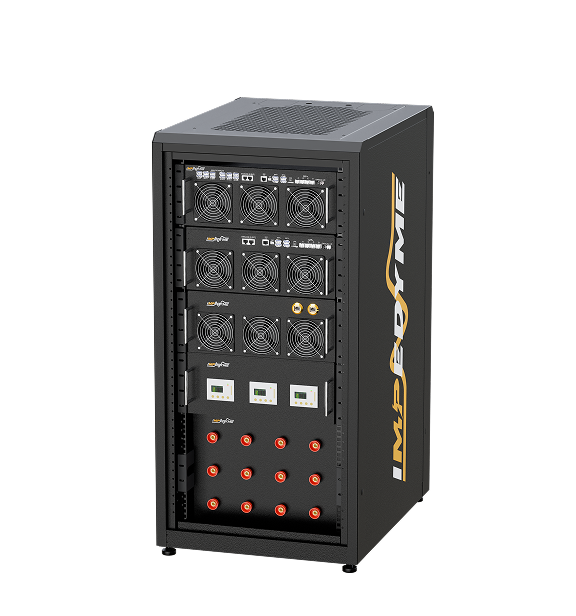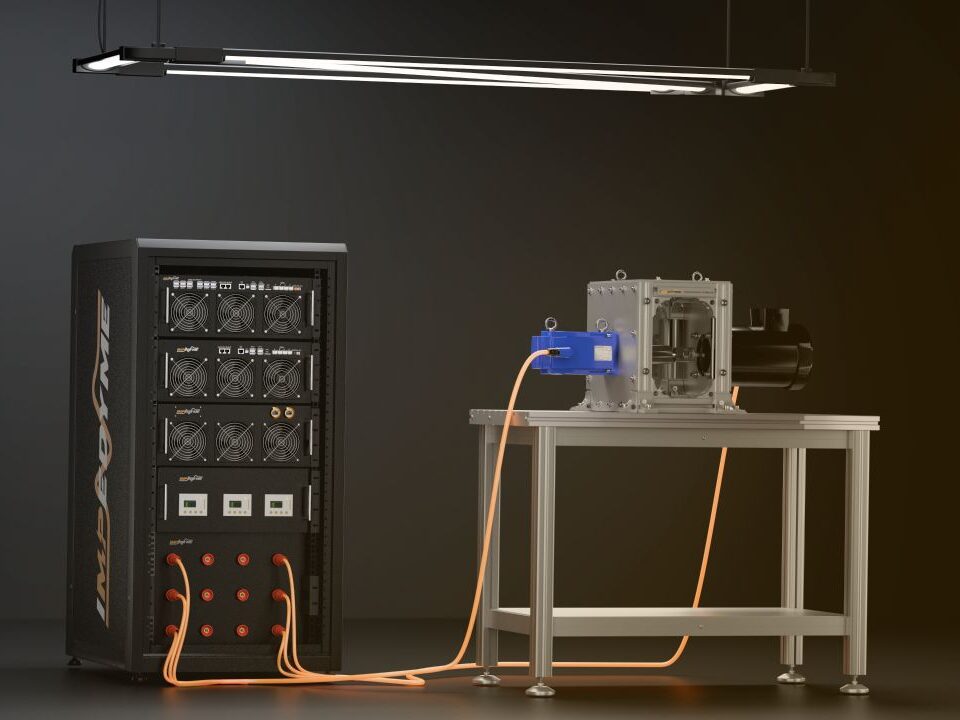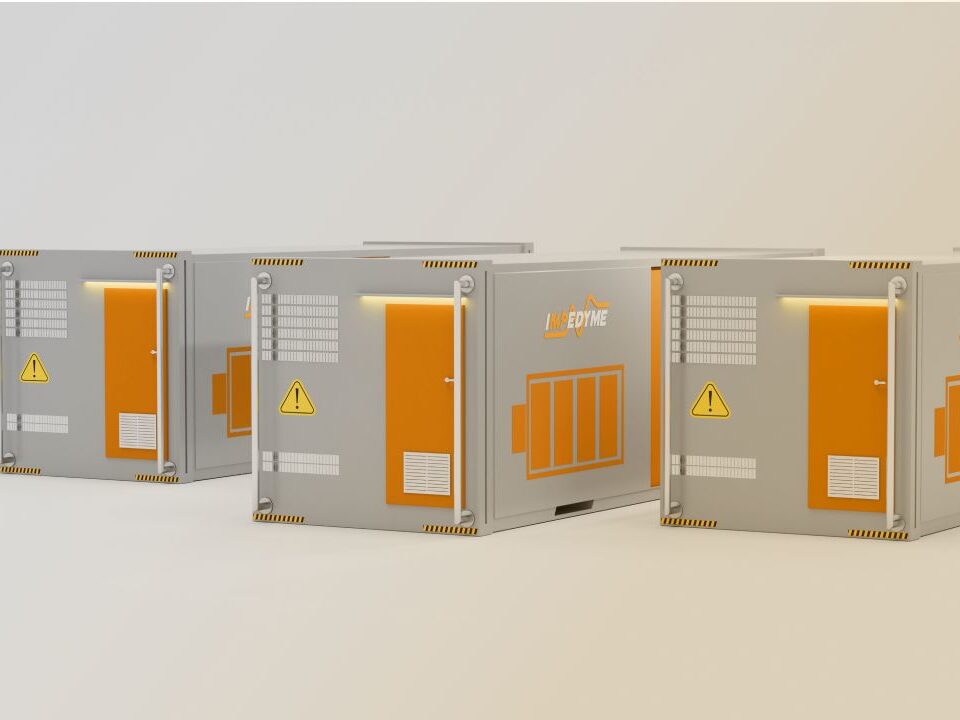
-
 Induction Motor
Induction Motor
-
 Automotive Electrical System Simulation
Automotive Electrical System Simulation
-
 DC/DC Bidirectional Converter
DC/DC Bidirectional Converter
-
 PWM Control for Brushless DC
PWM Control for Brushless DC
-
 BLDC Motor Control and Drive Simulation
BLDC Motor Control and Drive Simulation
-
 Electric Vehicle Fast Charger Simulation
Electric Vehicle Fast Charger Simulation
-
 DFIG Wind Turbine Simulation
DFIG Wind Turbine Simulation
-
 Dual Active Bridge
Dual Active Bridge
-
 EV Dynamometer Test Environment Simulation
EV Dynamometer Test Environment Simulation
-
 Electric Vehicle Simulation
Electric Vehicle Simulation
-
 Three-Phase Grid-Connected Inverter Using Direct-Q…
Three-Phase Grid-Connected Inverter Using Direct-Q…
-
 Three-Phase Grid-Connected Solar Photovoltaic
Three-Phase Grid-Connected Solar Photovoltaic
-
 Grid-Connected Rectifier
Grid-Connected Rectifier
-
 Grid-Tied Inverter System
Grid-Tied Inverter System
-
 Torque Control in a Hybrid Excitation Synchronous …
Torque Control in a Hybrid Excitation Synchronous …
-
 Wye-Delta Starting Circuit
Wye-Delta Starting Circuit
-
 IPMSM-Based Axle-Drive
IPMSM-Based Axle-Drive
-
 Simplified Parallel Hybrid Electric Vehicle
Simplified Parallel Hybrid Electric Vehicle
-
 Simplified Series Hybrid Electric Vehicle
Simplified Series Hybrid Electric Vehicle
-
 Series-Parallel Hybrid Electric Vehicle
Series-Parallel Hybrid Electric Vehicle
-
 Three-Phase Matrix Converter Simulation
Three-Phase Matrix Converter Simulation
-
 Venturini Modulation for Three-Phase Matrix Conver…
Venturini Modulation for Three-Phase Matrix Conver…
-
 Microgrid Frequency Regulation Using Vehicle-to-Gr…
Microgrid Frequency Regulation Using Vehicle-to-Gr…
-
 Three-Phase Modular Multilevel Converter
Three-Phase Modular Multilevel Converter
-
 Field-Oriented Control
Field-Oriented Control
-
 Interior Permanent Magnet Synchronous Generator
Interior Permanent Magnet Synchronous Generator
-
 Permanent Magnet Synchronous Machine
Permanent Magnet Synchronous Machine
-
 PMSM Rotor Angular Velocity
PMSM Rotor Angular Velocity
-
 PMSM-Based Electrical Traction Drive
PMSM-Based Electrical Traction Drive
-
 Maximum Power Point Tracking
Maximum Power Point Tracking
-
 Six-Phase Permanent Magnet Synchronous Machine
Six-Phase Permanent Magnet Synchronous Machine
-
 Synchronous Machine-Based Electrical Drive Simulat…
Synchronous Machine-Based Electrical Drive Simulat…
-
 Single-Stage Solar Inverter
Single-Stage Solar Inverter
-
 Three-Phase Cycloconverter Simulation
Three-Phase Cycloconverter Simulation
-
 Totem-Pole PFC Simulation
Totem-Pole PFC Simulation
-
 Twelve-Pulse Thyristor Rectifier
Twelve-Pulse Thyristor Rectifier
-
 Two-Wheeler On-Board Charger
Two-Wheeler On-Board Charger
-
 Vienna Rectifier Simulation
Vienna Rectifier Simulation
-
 High-Voltage Direct Current
High-Voltage Direct Current
-
 Wireless Power Transfer
Wireless Power Transfer

Comprehensive Documentation for EV Dynamometer Test Environment Simulation
Table of Contents
- 1 Comprehensive Documentation for EV Dynamometer Test Environment Simulation
- 1.1 Introduction
- 1.2 System Overview
- 1.2.1 What is an EV Dynamometer Test Environment?
- 1.2.2 Purpose of the Simulation
- 1.3 Key Features
- 1.3.1 Realistic Vehicle Load Simulation
- 1.3.2 Torque and Speed Control Assessment
- 1.3.3 Bidirectional Energy Flow and Efficiency Analysis
- 1.4 Simulation Objectives
- 1.5 Technical Description
- 1.5.1 System Configuration
- 1.5.2 Control Methodology
- 1.6 Advantages of the EV Dynamometer Simulation
- 1.7 Applications
- 1.7.1 EV Powertrain Development
- 1.7.2 Battery Performance and Management
- 1.7.3 Vehicle Dynamics and Control
- 1.7.4 Energy Efficiency and Range Optimization
- 1.7.5 Durability and Reliability Testing
- 1.7.6 Noise, Vibration, and Harshness (NVH) Testing
- 1.8 Simulation Benefits
- 1.9 Summary
- 1.10 Future Enhancements
- 1.10.1 Induction Motor
- 1.10.2 Automotive Electrical System Simulation
- 1.10.3 DC/DC Bidirectional Converter
- 1.10.4 PWM Control for Brushless DC
Introduction
Electric vehicle (EV) development requires robust testing methodologies to evaluate powertrain performance under controlled conditions. This project models an EV dynamometer test environment, simulating a back-to-back test setup with an asynchronous machine (ASM) and an interior permanent magnet synchronous machine (IPMSM). The simulation enables the assessment of torque control strategies, system interactions, and energy flow dynamics within an EV powertrain. By incorporating advanced control techniques, this project provides a comprehensive framework for analyzing electric machine behavior in a laboratory-like setting.

System Overview
What is an EV Dynamometer Test Environment?
An EV dynamometer test environment replicates real-world driving conditions by using a motor-generator setup. The test system includes:
- Device Under Test (DUT): The EV traction motor (IPMSM).
- Load Machine: An ASM that emulates real-world driving loads.
- Bidirectional Power Flow Control: Enables energy recirculation for efficient testing.
Purpose of the Simulation
The simulation aims to:
- Evaluate torque control and energy efficiency of the EV powertrain.
- Analyze system interactions between the traction motor and load machine.
- Validate regenerative braking and bidirectional power flow strategies.
Key Features
Realistic Vehicle Load Simulation
Models road load conditions, acceleration, and regenerative braking for precise system evaluation.
➡️ HIL/PHIL Benefit: Enables real-time vehicle load emulation for accurate testing.
Torque and Speed Control Assessment
Implements vector control, direct torque control (DTC), and field-oriented control (FOC) for precise motor control.
➡️ HIL/PHIL Benefit: Allows real-time validation of advanced motor control strategies.
Bidirectional Energy Flow and Efficiency Analysis
Simulates energy recirculation between the traction motor and load machine, optimizing test efficiency.
➡️ HIL/PHIL Benefit: Supports real-time energy flow optimization in closed-loop environments.
Cost Savings: Reduces the need for physical prototypes and testing, lowering development costs.
Faster Time-to-Market: Accelerates the testing and validation process, enabling faster product launches.
Improved Accuracy: Provides precise and repeatable test conditions, ensuring reliable results.
Enhanced Safety: Allows testing of extreme and fault conditions without risk to personnel or equipment.
Simulation Objectives
This simulation helps evaluate:
- Motor and inverter performance under transient and steady-state conditions.
- Powertrain efficiency, energy losses, and regenerative braking effectiveness.
- Impact of different control strategies on system stability.
➡️ HIL/PHIL Benefit: Enables real-time adaptation of control strategies for performance enhancement.
Technical Description
System Configuration
- Input: DC power source simulating an EV battery pack.
- Output: Controlled torque and speed profiles for vehicle load emulation.
- Test Components:
- Traction Motor: IPMSM controlled by a vector-controlled inverter.
- Load Machine: ASM acting as a controlled load.
- Control Unit: Implementing FOC, DTC, and speed-torque regulation algorithms.
Control Methodology
- Field-Oriented Control (FOC): Optimizes motor torque and efficiency.
- Direct Torque Control (DTC): Provides fast dynamic response.
- Torque-Speed Mapping: Simulates real-world EV driving cycles.
➡️ HIL/PHIL Benefit: Enables real-time adaptation of control algorithms for system refinement.
Advantages of the EV Dynamometer Simulation
- Accurate Load Emulation: Simulates various road conditions.
- Energy-Efficient Testing: Utilizes bidirectional energy flow for cost-effective evaluations.
- Scalable Test Environment: Supports different motor topologies and control methods.
➡️ HIL/PHIL Benefit: Enables safe and repeatable validation before real-world deployment.
Applications
EV Powertrain Development
Motor and Inverter Testing: Simulations are used to test and optimize the performance of electric motors and inverters under various load and speed conditions.
Transmission and Drivetrain Testing: Simulations help evaluate the efficiency and durability of EV transmissions and drivetrains under realistic driving scenarios.
Thermal Management: Simulations analyze the thermal performance of powertrain components, ensuring they operate within safe temperature limits.
Battery Performance and Management
Battery Testing: Simulations are used to test battery performance under different charge and discharge cycles, optimizing energy efficiency and lifespan.
Battery Management Systems (BMS): Simulations help validate BMS algorithms for state-of-charge (SOC) estimation, thermal management, and fault detection.
Regenerative Braking: Simulations evaluate the effectiveness of regenerative braking systems in recovering energy and improving overall efficiency.
Vehicle Dynamics and Control
Traction Control: Simulations are used to test and optimize traction control systems for EVs, ensuring stability and safety under various road conditions.
Torque Vectoring: Simulations help evaluate torque vectoring systems that improve handling and performance by independently controlling the torque delivered to each wheel.
Suspension and Chassis Testing: Simulations analyze the impact of EV components on vehicle dynamics, optimizing suspension and chassis design for comfort and performance.
Energy Efficiency and Range Optimization
Energy Consumption Analysis: Simulations are used to analyze energy consumption under different driving conditions, optimizing range and efficiency.
Aerodynamic Testing: Simulations evaluate the impact of aerodynamics on energy efficiency, helping design vehicles with reduced drag and improved range.
Driving Cycle Simulation: Simulations replicate standard driving cycles (e.g., WLTP, NEDC) to evaluate energy efficiency and emissions compliance.
Durability and Reliability Testing
Component Durability: Simulations are used to test the durability of EV components, such as motors, batteries, and power electronics, under extreme conditions.
Accelerated Life Testing: Simulations help predict the lifespan of EV components by replicating years of usage in a compressed timeframe.
Fault Tolerance: Simulations evaluate the performance of EV systems under fault conditions, improving reliability and safety.
Noise, Vibration, and Harshness (NVH) Testing
Motor and Drivetrain NVH: Simulations are used to analyze noise and vibration from electric motors and drivetrains, optimizing design for reduced NVH.
Road Noise Simulation: Simulations replicate road noise and vibrations, helping design vehicles with improved ride comfort.
Acoustic Performance: Simulations evaluate the acoustic performance of EVs, ensuring compliance with noise regulations.
Simulation Benefits
With this simulation, users can:
- Optimize motor and inverter control strategies for EV powertrains.
- Analyze energy flow dynamics and efficiency in bidirectional power transfer.
- Validate powertrain performance under different load and driving conditions.
➡️ HIL/PHIL Benefit: Bridges the gap between simulation and real-world EV testing.
Summary
The EV Dynamometer Test Environment Simulation provides a detailed framework for analyzing EV powertrain performance, torque control, and energy efficiency. Impedyme’s HIL and PHIL solutions enhance the development process:
| Development Stage | Impedyme’s Contribution |
|---|---|
| Control Design | RCP using HIL for rapid algorithm validation |
| Control Hardware Testing | CIL with real-time EV motor models |
| Power Stage Verification | PHIL with real voltage and power interaction |
| Final Validation | Full-system PHIL under realistic driving conditions |
Future Enhancements
- Integration of AI-based predictive control for real-time adaptation.
- Testing of multi-motor configurations for advanced EV architectures.
- Real-time validation of EV drive cycles with dynamic load variations.
The EV Dynamometer Test Environment Simulation serves as a critical tool for evaluating EV powertrain efficiency, motor control strategies, and regenerative braking systems. With Impedyme’s HIL/PHIL solutions, engineers can optimize EV performance, enhance system reliability, and validate advanced control methodologies before deployment.






